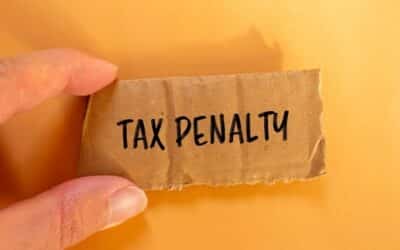Question: I have funds in a Roth IRA, a traditional IRA and my employer’s 401(k) plan. Is there a way to avoid selling retirement account assets at a loss as I near the age where I must commence retirement plan distributions?
Answer: Generally speaking, taxpayers must commence distributions from their retirement accounts by their required beginning date, April 1 of the calendar year following the year in which they attain age 70 ½. There are strategies you can utilize to avoid selling depressed retirement account assets for required minimum distribution purposes. One strategy is to satisfy your minimum distribution requirements in-kind. That is, instead of selling a depreciated investment at a reduced price and distributing the proceeds in cash, you can simply distribute the depreciated investment itself to satisfy your minimum distribution obligation. So long as the value of the distributed asset is greater than or equal to the amount you are required to distribute, your minimum distribution obligation will have been satisfied. You can then retain the investment and choose to sell it a later time if and when its value increases to the point you are comfortable liquidating the position.
Some obvious drawbacks must be considered. Receiving an in-kind distribution may leave you without funds to pay the tax on the distributed funds. The strategy is only viable if you have funds from other sources to satisfy your tax liability as taxes are imposed whether the distribution is made in cash or in kind. Likewise, if you need to utilize the cash for living and other expenses, an in-kind distribution may leave you short of funds. Finally, your employer’s 401(k) plan may not permit in-kind distributions.
Another strategy is to restructure your retirement plan investments so you are less likely to be faced with the prospect of liquidating investments which have depreciated in value. If, like many individuals nearing retirement age, your portfolio consists of a mixture of growth-oriented investments and fixed income positions, you should rethink which investments are held in each account. Growth-oriented investments which typically have the greatest appreciation potential usually have the greatest risk of decreasing in value. Fixed income investments, on the other hand, do not fluctuate in value as much as growth-oriented investments as they are generally safer investments and less volatile. Therefore, you should consider holding your growth-oriented investments in accounts where you have the greatest potential to defer distributions while fixed income investments are better candidates to hold in accounts where you must commence distributions at an earlier time.
That being said, you should first allocate your growth-oriented investments to your Roth IRA. Roth IRA assets do not have to be withdrawn during the account holder’s lifetime. Only upon an account holder’s death are Roth IRA distributions required and can be made over the designated beneficiary’s IRS-prescribed life expectancy. The absence of required distributions means you will not be required to liquidate any Roth IRA investments which have depreciated in value during your lifetime.
If the value of your growth-oriented assets exceeds the value of assets held in your Roth IRA, then your employer’s 401(k) are the next best option for holding investments with long-term growth potential. Depending on the particular features of your employer’s plan, if you continue to work beyond your required beginning date, you may have the option of maintaining your assets in your employer’s 401(k) plan without commencing distributions until your actual retirement date. Note that if you are deemed to be an owner of five percent or more of the stock or other equity interests in your employer, you must commence distributions as of your required beginning date and you are not permitted to defer distributions until your actual retirement date. While distributions likely cannot be postponed until death, non-five percent owners in employment status can usually defer plan distributions and thereby experience some relief from the minimum distribution requirement.
Distributions from traditional IRA assets must in all cases begin by a taxpayer’s required beginning date. Because you are nearing your required beginning date, your fixed income investments should first be allocated to your traditional IRA. With less volatile assets in your traditional IRA, you are less likely to need to liquidate investments at the time of a market downturn.
To print this article, click here.
The Tax Corner addresses various tax, estate, asset protection and other business matters. Should you have any questions regarding the subject matter or if you have questions you want answered, you may contact Bruce at (312) 648-2300 or send an e-mail to [email protected].


